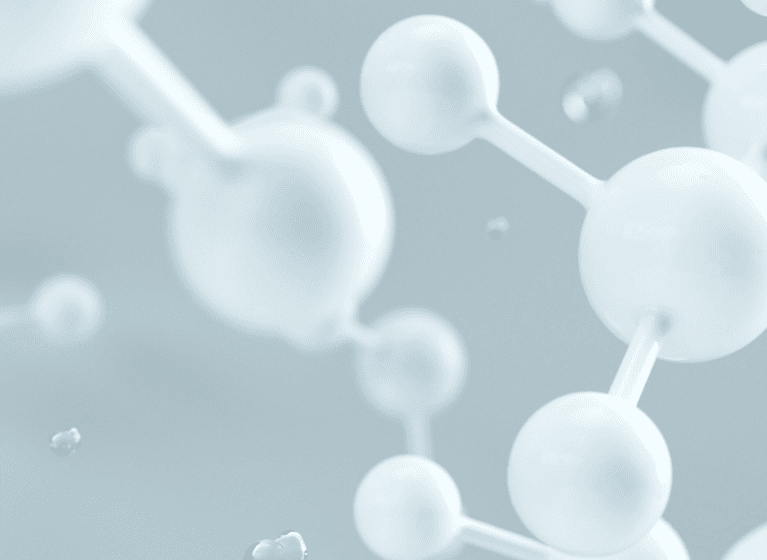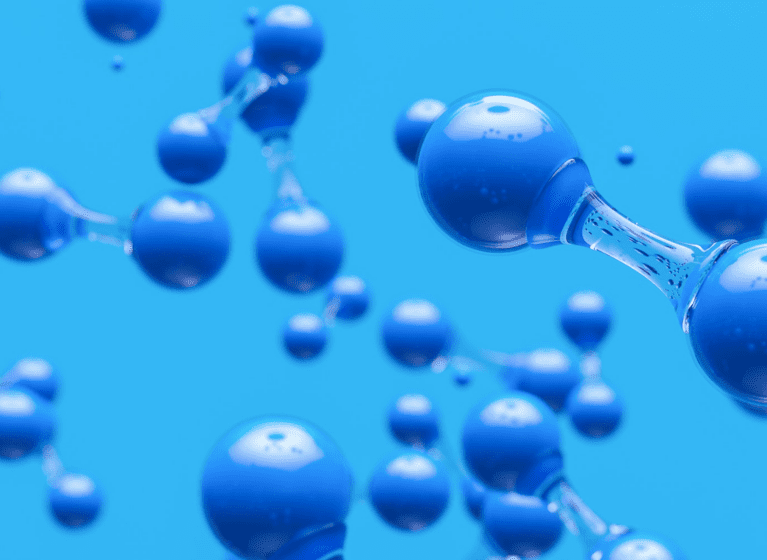Given the increasing requirement for battery storage capacity as the world moves towards net zero carbon emission targets, new types of batteries are currently emerging to compete with and compliment lithium-ion batteries.
The article explores recent advances in this technology space, highlighting new batteries that are reaching or may soon reach commercialisation. Relevantly, we previously reported on patent growth and activity in this area.
Introduction
Since their inception, lithium-ion batteries have become a cornerstone of modern life and battery technology is expected to become more critical as the world moves towards net zero carbon emission targets. We have recently discussed the patent growth and activity in this area here.
Although lithium-ion batteries dominate the battery technology space due the vast amount of research and development historically directed towards them, they do have some distinct disadvantages. The materials primarily used in common lithium-ion battery cells are lithium, cobalt, and nickel, all of which are relatively scarce, expensive and obtaining these materials can lead to sustainability questions. In particular, recent advances are directed to the reduction of cobalt, as 60% of the world’s cobalt comes from the Democratic Republic of Congo. These material costs typically mean that the average lithium-ion battery currently costs between US$105-160 per kilowatt hour (kWh), but are likely to continue to reduce in price in the future.1
Furthermore, the electrolytes typically utilised can be highly flammable under the right conditions, and due to this, large scale energy storage employing lithium-ion technology needs careful monitoring to ensure safety.
Given the increasing need for battery storage capacity and their applications, new types of batteries are currently emerging to compete and compliment typical lithium-ion batteries. This article details some of the recent advances in this technology, highlighting new batteries that are reaching or may soon reach commercialisation.
Lithium-sulphur batteries
Although a lithium-based battery chemistry, lithium-sulphur batteries have the potential to overcome many of the key shortcomings of currently commercialised lithium-ion batteries.
In current lithium-ion batteries, the lithium containing material is the cathode and the lithium is typically contained within a heavy metal oxide based material. This is switched in lithium-sulphur batteries, where lithium metal is used as the anode and a sulphur containing material used as the cathode. This presents two key advances, first by not using metal oxide based materials thermal runaway events are mitigated. Second, the use of sulphur instead of nickel and cobalt based metal oxides means the material costs are greatly reduced due to the high global abundance of sulphur.
Lithium-sulphur batteries also boast exceptional energy density, with the maximum theoretical energy density over ten times that of current lithium-ion technologies. Current lithium-sulphur battery technologies are impressive in this regard, with batteries demonstrating a specific energy of around 550 Watt-hours per kilogram (Wh/kg), about double the current storage of high end lithium-ion batteries (approx. 280 Wh/kg).2
Current R&D is directed to improving the life cycle of these batteries as they have traditionally suffered from several degradation mechanisms. First, dendrite formation by lithium is known for lithium-sulphur batteries, and is the main cause of short-circuit in current lithium-ion technologies.
Unique to lithium-sulphur batteries however is what is known as “polysulphide shuttle”, where polysulphide compounds formed through discharge can leak from the cathode and diffuse to the anode, be reduced to short-chain polysulphides, which then diffuse back to the cathode. This results in a continuous leaking of the cathode material and leads to low battery lifetime. Furthermore, the required formation of lithium sulphide (Li2S) in the battery leads to a large mechanical stress on the casing, as Li2S expands by nearly 80% of the volume of elemental sulphur.3,4
Other alkali metal batteries
Following the same ion storage principles as the related lithium-ion technology, sodium and potassium-ion batteries have gathered increasing interest since 2008. Replacing lithium with sodium or potassium would address some of the sustainability concerns currently surrounding lithium-ion batteries, as both sodium and potassium are cheaper and more abundant.
Sodium-ion batteries
Sodium is the 6th most abundant element on Earth and is far more abundant than lithium (33rd). It can be obtained from seawater and as a result is considerably cheaper, leading to a significant advantage in material costs over lithium-ion, if scalable.
Batteries employing sodium-ion chemistry however are not without significant drawbacks, which are the subject of continued study and innovation in the space. Primarily, the energy density and weight of these batteries are less favourable to comparable lithium-ion counterparts. Sodium-ion batteries currently have a specific energy of around 150-160 Watt-hours per kilogram (Wh/kg) which is about half of the current storage of lithium-ion batteries. They also suffer from a reduced number of charge-discharge cycles due to an increased propensity for sodium-ion batteries to form dendrites, leading to battery decomposition. For example, nickel-manganese-cobalt (NMC) lithium-ion batteries typically have a cycle life of around 3500 cycles, whereas current sodium-ion batteries have a cycle life in the low thousands.5
Recently, companies like Contemporary Amperex Technology Co. Ltd (CATL) have shown promise in the sodium-ion battery space using a Prussian white cathode (a reduced form of Prussian blue) which is exceptionally low cost and non-toxic. They claim the battery can maintain a capacity of 95% after 10,000 cycles and filed patent applications in 2022 for the second generation of this technology, boasting an improved specific energy of up to 200 Wh/kg.6,7
Potassium-ion batteries
Similar to sodium, potassium is considerably more abundant than lithium and so is a significantly cheaper choice of material for large scale battery applications. Prototype potassium-ion batteries have used potassium metal as the anode and Prussian blue as the cathode. This prototype was successfully used for more than 500 cycles and continued research and development has increasingly focussed on enhancing the specific capacity and cycling performance.8
Given that potassium ions have an identical electrochemical potential to lithium ions, the cell potential is similar to lithium and so could be used in applications where lithium-ion batteries are already employed.
Redox Flow batteries
Redox flow batteries (named after reduction-oxidation) are a type of electrochemical cell where chemical energy is provided by two dissolved chemical components (electrolytes) that are separately stored in tanks, external to the cell. These electrolytes are pumped through the system on separate sides of an ion-selective membrane. The two electrolytes are able to react through the membrane in a redox process, converting chemical energy into electricity. The process is reversible and can be recharged by inputting electricity into the system or by replacing the liquid electrolytes. Battery systems in development are based on several different redox chemistries, with the most popular to date being vanadium redox flow batteries.9
This process is highly robust, with several advantages over traditional battery systems. First, as this is a redox chemical process, redox flow batteries can be fully discharged with a negligible loss of efficiency over time. Traditional lithium-ion batteries lose efficiency over time and are recommended not to be fully discharged. Redox flow batteries are also very scalable, where the output generated is dependent on the volume of electrolyte in the tanks.
Also, rapid recharging of redox flow battery systems is possible by simply replacing the electrolyte solutions with fresh electrolyte once discharged. The spent liquid electrolyte can be recovered and recharged elsewhere, which means little downtime between charge and recharge cycles.
These systems do have considerable downsides however, with the need for a fairly complex system of pumps to maintain flow around the system. These pumps also consume power, either from the process itself or from an external energy source, which reduces the overall efficiency of the process.
Iron-air batteries
Iron-air batteries are a subset of a larger group of metal-air batteries that are gathering interest. Metal-air electrochemical cells use an anode of pure metal and ambient air as the external cathode, typically with an aqueous or aprotic electrolyte. Iron-air batteries involve the oxidation of the iron anode to form rust, releasing electrons to be used in an external circuit. The battery can then be recharged and the reaction reversed with an applied electric current.
Iron-air batteries are an attractive technology with primary interest directed towards grid-scale energy storage due to the increased weight of the system compared to current lithium-ion grid-scale storage systems. These systems have excellent specific energy, with commercial examples boasting specific energy ratings of around 750 Wh/kg (c.f. lithium-ion 280 Wh/kg) and due to the abundance of iron and air, these systems are exceptionally low cost with full systems allegedly costing less than US$20 per KWh (and projected to potentially be as low as US$6) compared to over US$100 for lithium-ion batteries today.10,11
Iron-air systems are very safe due to the use of non-flammable electrolytes, the very low risk of thermal runaway, and the use of non-toxic metals.
Zinc Bromide gel battery
Zinc bromide gel batteries are similar to redox-flow batteries based on the zinc-bromide redox couple. This technology has been pioneered by Gelion.12
The liquid electrolyte is replaced with a gel, which has advantages of both a liquid and a solid electrolyte. Ions are able to move quicker than in a solid electrolyte, decreasing the battery charging time and the gel helps bromine distribution within the system, which decreases battery degradation and improves lifetime. The gel also has the added advantage of being water-based and therefore is a fire-retardant.
These systems have been shown to have a higher operating temperature than lithium-ion batteries (50 °C vs 40 °C). Gelion also claim that their grid scale battery could produce an energy density of 120 Wh/kg.
Crucially, Gelion claim their system is very easy to manufacture and recycle. Gelion believe that due to the similarity in the manufacturing of the Gelion battery and widely used lead-acid batteries, factories could be retrofitted to produce zinc bromide gel batteries at a low cost and could even be recycled in similar waste streams.13
Liquid-metal battery
Liquid-metal batteries are a technology being pioneered by the company Ambri.14 The system involves two metals of opposing electronegativity and a salt electrolyte placed in an insulated, sealed container which makes up the battery case. At room temperature all materials are solid and the battery is completely safe for transportation.
Upon addition of an electric current (charging), the container is heated to a temperature where the metals and salt electrolyte melt and naturally separate according to density. The metals sit either side of the salt electrolyte and during discharge, the more electropositive metal is stripped of electrons which flow through the circuit. The electrons to complete the circuit are then transferred to the more electronegative metal, creating two oppositely charged metal ions on either side of the salt electrolyte. These ions are attracted through the salt electrolyte, creating a new metal alloy. After full discharge, the battery is cooled for further transportation or electrons can be added to the battery to reverse the reaction and recharge the battery. As the overall reaction is exothermic, the battery generates its own heat to maintain the required operating temperature and can operate in both very cold and very hot conditions.
The most promising metal combination currently employed by Ambri are a calcium alloy anode and antimony cathode, but several other systems have shown proof of this concept.15
The calcium-antimony liquid-metal battery system is very robust with tests indicating after 10 years of calculated regular use, the system retains 85% of its initial capacity. With no strict anode and cathode in the cell, the battery does not suffer from permanent deformation or dendrite formation, which plagues the longevity of lithium-ion systems.
Moving forward
The battery chemistries discussed in this article are just a snapshot of current battery technologies undergoing continued research and commercialisation efforts. Further improvements to existing batteries and the discovery of new battery chemistries are expected to increase, given the critical importance of this space in long-term energy storage applications. In view of this predicted growth in developments within the battery space, the patent landscape surrounding battery technologies is set to increase in size and complexity as protection is sought for new chemistries, materials and systems.
The multidisciplinary team at FPA has technical expertise relevant to all aspects of the sector and is ready to assist in identifying and protecting new developments, as well as advising on the potential impact of an increasingly complex battery patent landscape.
1 Breakthrough Batteries – Powering the Era of Clean Electrification, Rocky Mountain Institute, 2019, rmi_breakthrough_batteries.pdf
2 Flexible high-energy-density lithium-sulfur batteries using nanocarbon-embedded fibrous sulfur cathodes and membrane separators, JW. Park, SC. Jo, MJ. Kim, IH. Choi, B. G. Kim, YJ. Lee, HY. Choi, S. Kang, TY. Kim, KJ. Baeg, NPG Asia Mater, 2021, 13, 30.
3 Rechargeable Lithium-Sulfur Batteries, A. Manthiram, Y. Fu, SH. Chung, C. Zu, YS. Su, Chem. Rev., 2014, 114, 23, 11751-11787.
4 ReaxFF molecular dynamics simulations on lithiated sulfur cathode materials, M. M. islam, A. Ostadhossein, O. Borodin, A. T. Yaetes, W. W. Tipton, R. G. Hennig, N. Kumar, A. C. T. van Duin, Phys. Chem. Chem. Phys., 2015, 17, 3383-3393.
5 CATL Unveils Its Latest Breakthrough Technology by Releasing Its First Generation of Sodium-ion Batteries ׀ CATL
6 CATL new patent allows anode-free sodium-ion battery density to go above 200Wh/Kg ׀ carnewschina.com
7 Prussian White with Near-Maximum Specific Capacity in Sodium-Ion Batteries, C. Q. X. Lim and Z-K Tan, ACS Appl. Energy Mater., 2021, 4, 6, 6214 – 6220.
8 Potassium Secondary Batteries, A. Eftekhari, Z. Jian, X. Ji, ACS Appl. Mater. Interfaces, 2017, 9, 5, 4404 – 4419.
9 Vanadium Redox (VRB) Flow Batteries ׀ energystorage.org
10 https://formenergy.com/technology/battery-technology/
11 A Review of the Iron-Air Secondary Battery for Energy Storage, R. D. McKerracher, C. Ponce de Leon, R. G. A. Wills, A. A. Shah, F. C. Walsh, ChemPlusChem, 2015, 80, 2, 323 – 335.
12 https://gelion.com/gelion-endure-battery/
13 How Gelion is tackling the lithium-ion battery industry with its zinc-bromide alternatives ׀ SmartCompany
14 Liquid Metal Batteries: Past, Present, and Future, H. Kim, D. A. Boysen, J. M. Newhouse, B. L. Spatocco, B. Chung, P. J. Burke, D. J. Bradwell, K. Jiang, A. A. Tomazowska, K. Wang, W. Wei, L. A. Ortiz, S. A. Barriga, S. M. Poizeau, D. R. Sadoway, Chemical Reviews, 2013, 113, 2075 – 2099.
15 https://ambri.com/technology/





